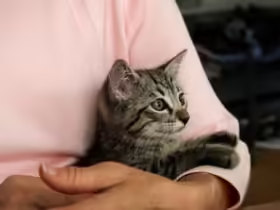Persian Cat Breed Information & Characteristics
Persian cats are renowned for their luxurious coats and distinctive flat faces, making them one of the most recognizable and adored cat breeds in the world. This comprehensive guide will delve into every aspect of the Persian cat, from its origins to its unique traits, helping you understand what makes these feline companions so special.
History of the Persian Cat
The Persian cat’s history can be traced back to the 1600s, although their exact origins are somewhat obscure. They are believed to have originated in Persia (modern-day Iran), hence their name. These cats were introduced to Europe in the 1600s, where they quickly gained popularity among royalty and aristocrats for their elegant appearance and calm demeanor.
Persians were among the first breeds to be recognized by cat fanciers and have been a staple in cat shows since the late 1800s. Over time, they have been bred for their distinctive features, which include a short muzzle, large eyes, and a thick coat.
Physical Characteristics
Coat and Color
One of the most striking features of the Persian cat is its long, luxurious coat. Their fur is dense, plush, and requires regular grooming to prevent matting and tangling. Persians come in a wide variety of colors and patterns, including solid, tabby, bicolor, and Himalayan. Popular colors include white, black, blue, and cream.
Face and Body
Persian cats have a distinctive flat face, known as the “brachycephalic” face. This feature, combined with their large, round eyes and small, upturned nose, gives them a sweet and expressive appearance. Their bodies are generally medium-sized, with a sturdy bone structure and short legs.
Eyes and Ears
Their large, round eyes are one of the breed’s most endearing traits. Eye color can vary based on coat color, with common hues including copper, blue, and green. Persians also have small, rounded ears that are set wide apart on their heads.
Temperament and Personality
Persian cats are known for their gentle and calm demeanor. They are generally quiet and affectionate, making them excellent companions for both individuals and families. They tend to be less active than some other breeds, often preferring a relaxed and sedentary lifestyle.
Social Behavior
Persians are typically very sociable and enjoy spending time with their human families. They are known to be good with children and other pets, although they can be somewhat reserved around strangers. Their laid-back nature means they adapt well to indoor living and are content to lounge around the house.
Intelligence and Training
While Persians are intelligent, they are not as active or playful as some other breeds. They do not require a lot of mental stimulation, but they can be trained to follow simple commands and use a litter box. They are more likely to seek affection and enjoy being pampered rather than engaging in vigorous play.
Grooming and Care
The Persian cat’s long coat requires regular maintenance to keep it in good condition. Daily brushing is recommended to prevent mats and tangles. Regular bathing is also important to keep their fur clean and healthy.
Eye Care
Persians are prone to tear staining due to their flat faces. Regular cleaning around the eyes can help reduce staining and keep the area free of infections.
Health Considerations
Persians are susceptible to certain health issues due to their brachycephalic facial structure. These issues can include breathing problems, dental issues, and eye conditions. Regular veterinary check-ups are essential to monitor their health and address any potential concerns.
Diet and Nutrition
A balanced diet is crucial for maintaining a Persian cat’s health. High-quality cat food that provides essential nutrients and vitamins is recommended. Ensure that your cat has access to fresh water at all times.
Living with a Persian Cat
Persian cats make wonderful pets for those who can provide the care and attention they require. They thrive in environments where they are given plenty of love and attention, as well as the necessary grooming to keep their coat in top condition.
Environmental Needs
Persians are best suited to indoor living due to their long fur, which can easily become matted if exposed to outdoor elements. They enjoy a comfortable and quiet living space where they can relax and feel secure.
Interaction and Play
While Persians are not highly active, they still enjoy interactive play and stimulation. Gentle toys and scratching posts can help keep them entertained and provide exercise. Regular affection and attention from their owners are also important for their emotional well-being.
Conclusion
The Persian cat breed is truly a marvel of feline beauty and grace. With their striking appearance, gentle personality, and unique grooming needs, they make for a loving and rewarding companion. If you are considering adding a Persian cat to your family, be prepared for the commitment required to care for their luxurious coat and health needs. With the right care and attention, a Persian cat can bring joy and elegance to any home.











Leave a Reply